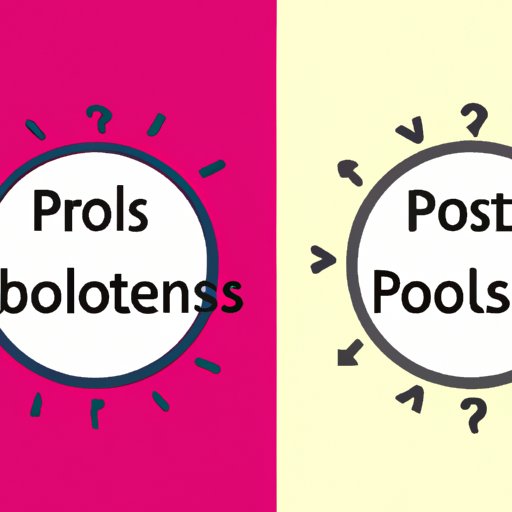Introduction
We all have problems in our lives that need to be solved. Whether it’s something small like deciding what to make for dinner or something bigger like figuring out how to pay off debt, problem solving is an important skill to have. Fortunately, there are steps we can take to help us arrive at the best possible solution.
Identify the Problem
The first step in solving a problem is to identify the issue. This means clarifying the problem and gathering relevant information. To do this, ask yourself questions such as “What is the problem?” and “What caused this to happen?”.
In addition to asking yourself questions, you should also talk to others who may have valuable insights. As the saying goes, two heads are better than one. Talking to someone else can help you see things from a different perspective and offer up new ideas.
Break It Down
Once you’ve identified the problem, the next step is to break it down into smaller parts. By breaking the issue into smaller pieces, it becomes easier to assess each part individually and come up with potential solutions.
For example, if you’re trying to figure out how to pay off debt, you could break it down into smaller tasks such as creating a budget, looking for ways to increase income, and researching debt consolidation loans. Breaking down the problem makes it less overwhelming and gives you a plan of attack.
Brainstorm Solutions
Now that you’ve identified the problem and broken it down into smaller parts, it’s time to brainstorm solutions. Ask yourself questions such as “What are some potential solutions?” and “What have I tried before that didn’t work?”
It’s also helpful to seek feedback from others. Talk to people who have experience with similar problems and ask for their advice. Plus, you can use online resources such as blogs, forums, and research studies to get more ideas.
Once you’ve generated a list of potential solutions, it’s time to consider the pros and cons of each one.
Consider the Pros and Cons
When it comes to choosing the best solution, it’s important to consider the pros and cons of each option. Take the time to analyze the positives and negatives of each solution and determine which one will be the most effective. For example, if you’re trying to decide between two job offers, consider the salary, benefits, commute time, and job responsibilities of each position.
Choose the Best Solution
Once you’ve evaluated the pros and cons of each option, it’s time to choose the best solution. Take your time to make an informed decision and don’t rush into anything. Make sure that the solution you choose is the right fit for you and your situation.

Put the Solution Into Action
Now that you’ve chosen the best solution, it’s time to put it into action. Set goals and create a timeline for completing the tasks necessary to implement the solution. Having a plan of action can help keep you on track and motivated.
Monitor the Results
Finally, it’s important to monitor the results of the solution. Assess the effectiveness of the solution and make adjustments if needed. You may find that the solution isn’t working as well as you had hoped and needs to be tweaked in order to be successful.
Conclusion
Solving problems can be challenging, but following a few simple steps can help ensure success. Start by identifying the problem, breaking it down into smaller parts, brainstorming solutions, and considering the pros and cons of each option. Then choose the best solution, put it into action, and monitor the results. With the right approach, you can find the best solution to any problem.
(Note: Is this article not meeting your expectations? Do you have knowledge or insights to share? Unlock new opportunities and expand your reach by joining our authors team. Click Registration to join us and share your expertise with our readers.)
